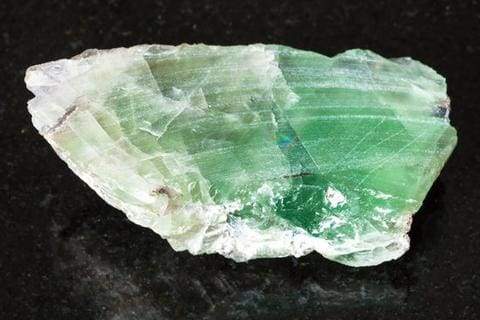Beryllium
Properties of beryl
Beryllium is a mineral belonging to the silicate group. Traces of other metals, such as iron, manganese, chromium, lithium, and cesium, directly affect the stone's color. Beryl includes precious and famous varieties like aquamarine, emerald, and morganite.
Beryl comes in a wide range of colors depending on the stone's chemical composition. Its luster is vitreous to dull, its crystal system is hexagonal, and its cleavage is imperfect. The stone breaks conchoidally, and its cleavage line is white. With a density of 2.60 to 2.90, beryl is a fairly hard stone, ranking 7 to 8 on the Mohs scale.
Beryllium exists in almost every part of the world, but the deposits that produce the most remarkable stones are found mainly in Colombia, which produces emeralds; Brazil, a country that produces aquamarines, heliodors and emeralds; Russia, where heliodors are found; and Pakistan, which also produces aquamarines.

History of beryl
Beryl was known to the ancients. Pliny the Elder mentioned the stone as early as 77 AD. Etymologically, the term derives from beryl, which in turn comes from the ancient Greek word berullos. This name, literally meaning "watercolor," seems to be primarily related to beryl's blue-green color. It appears that the ancient Romans used beryl to make magnifying glasses, such as Nero's Emerald Magnifying Glass, which is likely made of beryl.
Today, beryllium is mined to extract beryllium, a metal used in alloys and highly valuable in the nuclear industry. Gem-quality beryl crystals are used in jewelry for making ornaments, rings, and pendants. The stone lends itself to all kinds of designs and can be cut into facets, drops, pears, squares, cabochons, and more.
Discover our romantic moonstone bracelet
Benefits of beryl
In lithotherapy, the physical benefits of beryl vary according to its color. The stone is believed to contribute significantly to establishing harmony among the subtle bodies. In general, the various types of beryl are said to contribute to the purification of the body and the stimulation of respiration and blood circulation. Certain types of beryl, such as bixbite, like a red stone, are particularly beneficial for the liver and bone marrow.
On a psychic and spiritual level, beryl is said to have a considerable influence on emotions and feelings. Morganite, for example, ranging in color from pink to orange, is said to be very useful for calming emotional disturbances and promoting seduction and feelings of love. Some even attribute to it the ability to amplify sexual orgasm. Heliodor, a yellow to golden stone, is said to be a good stimulant for strengthening willpower and bringing serenity instead of stress. The stone purges the body of negative energies to make way for positive impulses. The gentle yet powerful action of beryl is said to favor meditation; however, some experience using beryl is recommended to be able to handle the stone's power.
Discover our Gaya 7 Chakras bracelet – Balance and Positive Energy
The chakras associated with beryl are primarily the Solar Plexus, Heart, and Crown chakras. Other chakras may be added to the list depending on the color and specific type of beryl used. The stone is also considered beneficial for all astrological signs according to its color and characteristics.
Beryl is purified by immersing the stone in slightly salted distilled water for a few hours. To recharge the stone, simply expose it to sunlight (in the morning) on a piece of quartz.



















